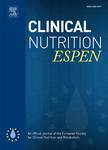版权所有:内蒙古大学图书馆 技术提供:维普资讯• 智图
内蒙古自治区呼和浩特市赛罕区大学西街235号 邮编: 010021

作者机构:Loyola University Chicago 2160 South First Avenue Building 115 Maywood IL 60153. Electronic address: awozniak@luc.edu. Loyola University Chicago Parkinson School of Health Science and Public Health 2160 South First Avenue Cuneo 4(th) Floor Suite Maywood IL 60153. Electronic address: poconnor1@luc.edu. Loyola University Chicago Parkinson School of Health Science and Public Health 2160 South First Avenue Maywood IL 60153. Electronic address: jseigal@luc.edu. Loyola University Medical Center Department of Radiology 2160 South First Avenue Maywood IL 60153. Electronic address: vvasilopoulos@lumc.edu. School of Engineering Science Simon Fraser University 8888 University Drive Burnaby BC V5A 0S6. Electronic address: mfbeg@sfu.ca. Department of Computer Science Memorial University of Newfoundland (MUN) EN-2014 S. J. Carew Building St. John's NL A1B 3X5 Canada. Electronic address: kpopuri@mun.ca. Loyola University Chicago 2160 South First Avenue Building 115 Room 254 Maywood IL 60153. Electronic address: cjoyce6@luc.edu. Loyola University Chicago Parkinson School of Health Science and Public Health 2160 South First Avenue Cuneo 439 Maywood IL 60153. Electronic address: psheean1@luc.edu.
出 版 物:《Clinical nutrition ESPEN》
年 卷 期:2025年第68卷
页 面:638-644页
主 题:Automated segmentation SARS-CoV-2 infection body composition computed tomography malnutrition nutrition status
摘 要:RATIONALE AND OBJECTIVES:Fully automated, artificial intelligence (AI) -based software has recently become available for scalable body composition analysis. Prior to broad application in the clinical arena, validation studies are needed. Our goal was to compare the results of a fully automated, AI-based software with a semi-automatic software in a sample of hospitalized patients. MATERIALS AND METHODS:A diverse group of patients with Coronovirus-2 (COVID-19) and evaluable computed tomography (CT) images were included in this retrospective cohort. Our goal was to compare multiple aspects of body composition procuring results from fully automated and semi-automated body composition software. Bland-Altman analyses and correlation coefficients were used to calculate average bias and trend of bias for skeletal muscle (SM), visceral adipose tissue (VAT), subcutaneous adipose tissue (SAT), intermuscular adipose tissue (IMAT), and total adipose tissue (TAT-the sum of SAT, VAT, and IMAT). RESULTS:A total of 141 patients (average (standard deviation (SD)) age of 58.2 (18.9), 61% male, and 31% White Non-Hispanic, 31% Black Non-Hispanic, and 33% Hispanic) contributed to the analysis. Average bias (mean ± SD) was small (in comparison to the SD) and negative for SM (-3.79 cm ± 7.56 cm) and SAT (-7.06 cm ± 19.77 cm), and small and positive for VAT (2.29 cm ± 15.54 cm). A large negative bias was observed for IMAT (-7.77 cm ± 5.09 cm), where fully automated software underestimated intramuscular tissue quantity relative to the semi-automated software. The discrepancy in IMAT calculation was not uniform across its range given a correlation coefficient of -0.625; as average IMAT increased, the bias (underestimation by fully automated software) was greater. CONCLUSIONS:When compared to a semi-automated software, a fully automated, AI-based software provides consistent findings for key CT body composition measures (SM, SAT, VAT, TAT). While our findings support good overall agreement as